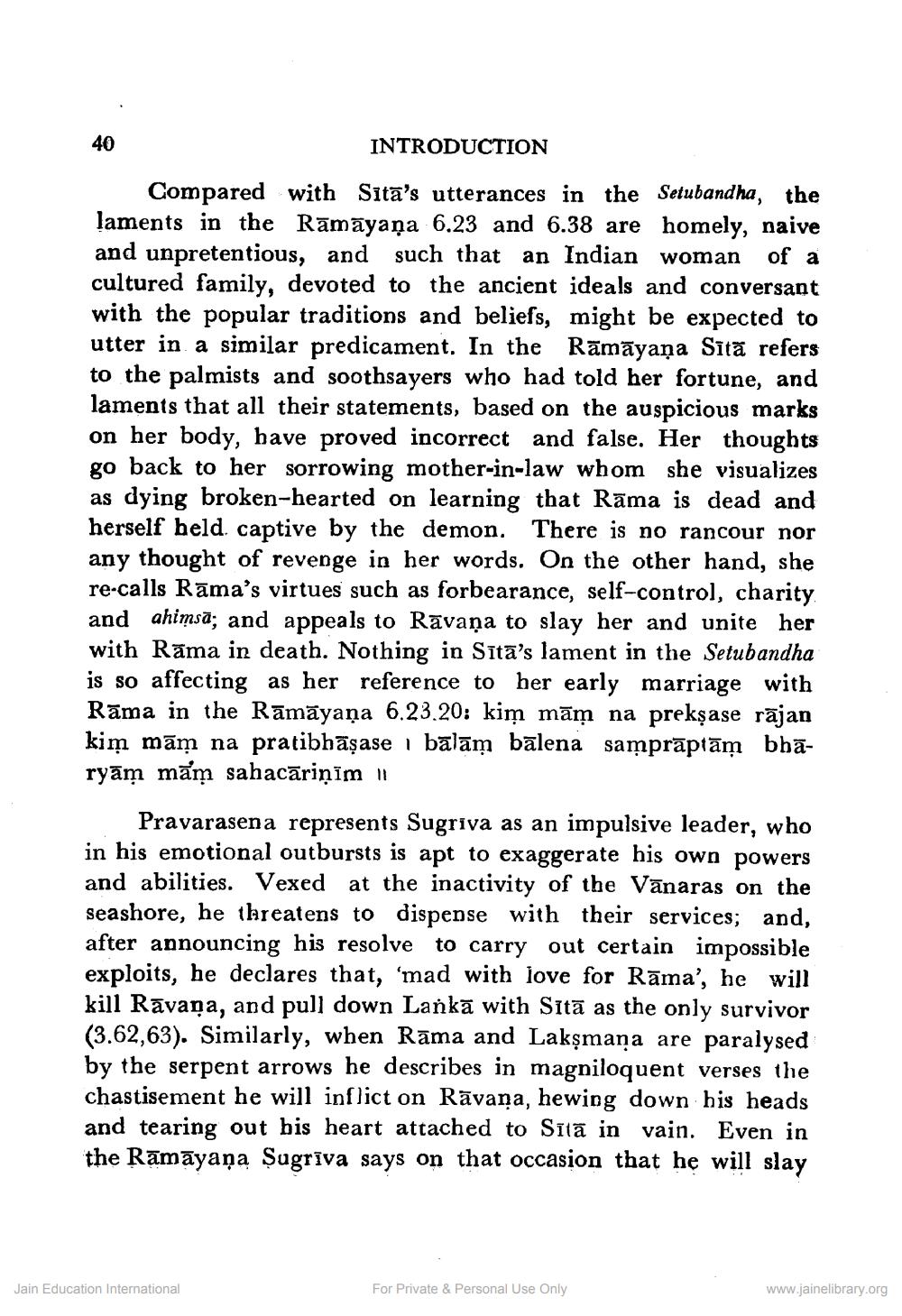________________
INTRODUCTION Compared with Sītā's utterances in the Setubandha, the laments in the Rāmāyaṇa 6.23 and 6.38 are homely, naive and unpretentious, and such that an Indian woman of a cultured family, devoted to the ancient ideals and conversant with the popular traditions and beliefs, might be expected to utter in a similar predicament. In the Rāmāyaṇa Sita refers to the palmists and soothsayers who had told her fortune, and laments that all their statements, based on the auspicious marks on her body, have proved incorrect and false. Her thoughts go back to her sorrowing mother-in-law whom she visualizes as dying broken-hearted on learning that Rāma is dead and herself held captive by the demon. There is no rancour nor any thought of revenge in her words. On the other hand, she re-calls Rāma's virtues such as forbearance, self-control, charity and ahimsā; and appeals to Rāvaņa to slay her and unite her with Rāma in death. Nothing in Sītā's lament in the Setubandha is so affecting as her reference to her early marriage with Rāma in the Rāmāyaṇa 6.23.20: kim mām na prekşase rājan kim mām na pratibhāșase i bālām bālena samprāptām bbāryām mām sahacāriņīm
Pravarasena represents Sugriva as an impulsive leader, who in his emotional outbursts is apt to exaggerate his own powers and abilities. Vexed at the inactivity of the Vānaras on the seashore, he threatens to dispense with their services; and, after announcing his resolve to carry out certain impossible exploits, he declares that, ‘mad with love for Rāma', he will kill Rāvana, and pull down Lankā with Sītā as the only survivor (3.62,63). Similarly, when Rāma and Lakşmana are paralysed by the serpent arrows he describes in magniloquent verses the chastisement he will inflict on Rāvana, hewing down his heads and tearing out his heart attached to Sita in vain. Even in the Rāmāyaṇa Şugrīva says on that occasion that he will slay
Jain Education International
For Private & Personal Use Only
www.jainelibrary.org




